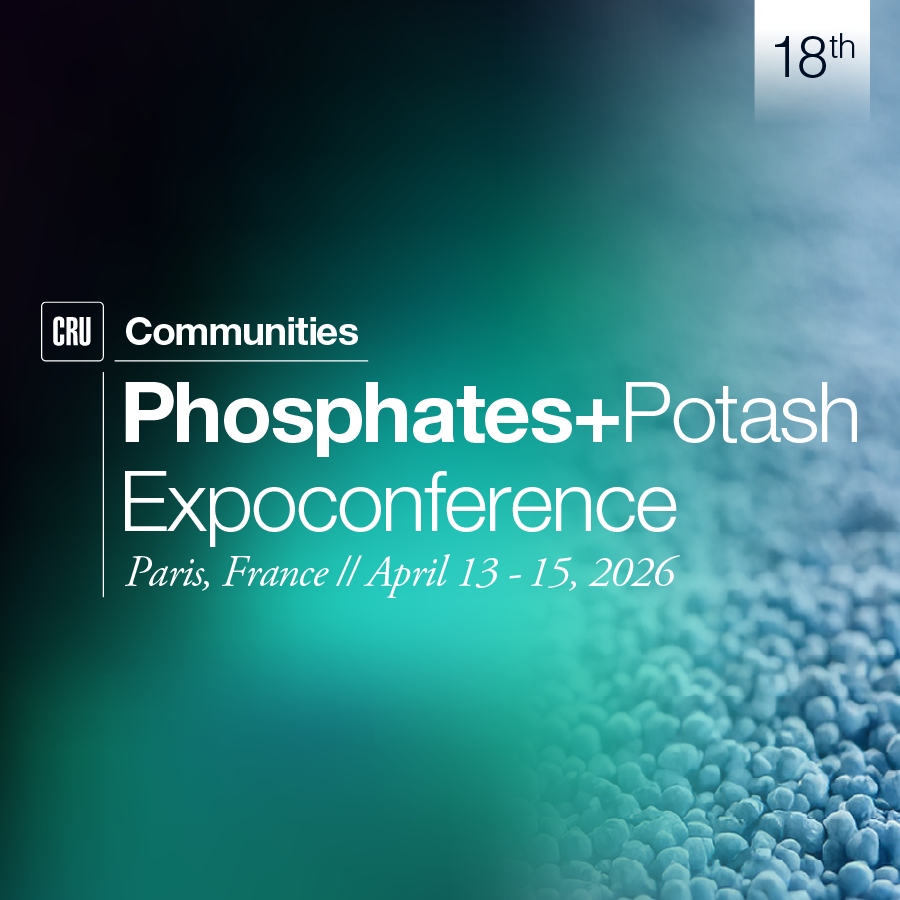The proposed merger between Chinese phosphate producers Wengfu and Kailin has made significant progress over recent weeks and is likely to be completed by the end of June, CRU understands.
The acceleration of the process has been pushed by the Guizhou provincial government, an indirect shareholder of both companies, which expressed its desire to speed up the process to improve efficiencies.
A combined company (referred to as WengfuKailin throughout this Insight) will be the third largest producer of both phosphoric acid and phosphate rock globally. This insight analyses the potential structure of a combined company and its likely influence on the global phosphate market – an influence we believe will be small for fertilizer markets but more impactful in the niche phosphate salts and value added markets.
Merger forms a global phosphate giant
Wengfu and Kailin entered merger talks approximately 18 months ago. Government owed capital entities are the largest shareholders of both companies. Guizhou provincial government owns 100% of Kailin Holding Ltd, through a province-owned assets supervision and administration commission. Close of 60% of Wengfu is held by two central government capital entities, while and Guizhou province holds a smaller share.
Given the size and ownership structure of both companies, CRU had expected the merger to take at least 3-4 years to be completed – if at all. However, recent activity has speeded up the process, and is exemplified by the strong push by government and the move of Wengfu’s chairman to Kailin in 2018.
Kailin successfully signed debt-for-equity agreements with several investors in April, totalling close to RMB 5 billion. This will decrease its debt-asset ratio by around 10% from the 90.4% reported at the end of March 2018, according to statements from Kailin. This compares to Wengfu’s debt-asset ratio of 77.7% at March 2018.
Collectively, the two companies produced 6.0 Mt of DAP in 2018, 22% of China’s total DAP output. The merger between Wengfu and Kailin will make the combined company the largest phosphate producer in China, leapfrogging the Yunnan-based Yuntianhua Group (YTH). WengfuKailin will become the third largest phosphate producer globally, in phosphoric acid and phosphate rock terms, behind OCP and Mosaic.
Both companies mine sedimentary deposits in Guizhou province, with Kailin’s underground Kaiyang mine the largest in China at 9Mt. Rock from all three mines is beneficiated to 32-33% P2O5, a higher quality than that mined elsewhere in China.
Both companies export small volumes of rock to the international market. Kailin provides close to 2 Mt to the domestic market, mostly to Hubei where it is blended with other lower grade rock to produce phosphoric acid for DAP and MAP production.
Kailin operates the largest scale, and lowest cost, DAP and MAP production facilities in China. Both its Dashui and Xifeng assets are in Guizhou province, near its Kaiyang mine. Wengfu has only one downstream asset in Guizhou, its Fuquan facility, also close to its two operational phosphate rock mines.
WengfuKailin has the lowest cost assets in China, seen in the DAP exporter cost curve below. The Guizhou-based facilities are almost 1,000km away from the southern ports of Beihai and Zhanjiang. This large distance means the cost at FOB is penalised by high transportation costs. However, its scale and access to high grade and low-cost phosphate rock bring its site costs much lower than other Chinese producers. Sites based outside of Guizhou province benefit from low-cost sulphuric acid, transferred from the production of other commodities.
Market overlap mostly limited to China
Both Wengfu and Kailin sell around 60% of its fertilizer production domestically, meaning a combined company will have some market overlap. WengfuKailin will account for just under 20% of total phosphoric acid capacity within China, and over 30% of DAP capacity. While the share of total capacity for this combined company will clearly increase, there is still ample competition that will ease any market concentration concerns.
There is limited overlap for the companies on the export market. While both companies sell into India and South East Asia, Kailin has a greater share of the India market, and Wengfu more prevalent in South East Asia. Kailin also sells large volumes to Pakistan and the Middle East and is targeting more sales into Africa. Wengfu sales are concentrated in Oceania and South East Asia. Wengfu owns distribution assets in Australia. CRU understands that Kailin sells most of its international product on a spot basis through its trading arm Aries, whereas Wengfu sells larger volumes on a contract basis.
A combined company will have more flexibility with rock supply. It may look to deliver more rock to its non-integrated facilities outside of Guizhou province, potentially pulling costs lower. Both companies have additional phosphate rock reserves to be developed and several projects currently rated as speculative by CRU. This is headlined by the 10Mt /y Yangshui project owned to Kailin. We do not expect a combined company to become a larger phosphate rock exporter, any increased presence in this market will be concentrated domestically.
Merger will enhance push for phosphate diversification
Like most phosphate producers in China, there has been a large push by both companies to diversify product offerings in response to declining domestic demand. Wengfu has been the most proactive in this. It offers technical services across the world (for example, it has recently worked on the phosphate rock beneficiation issues in Saudi Arabia) but also offers a diversified product range. Wengfu produces phosphate salts, animal feed phosphates, NPK and NPS fertilizers, along with water soluble fertilizer grades. Wengfu is now the largest producer of purified phosphoric acid globally and it plans to continue expanding in this area.
Kailin has been mostly fertilizer orientated but has recently diversified its capacity to producer water soluble grades, NPK and NPS.
We believe WengfuKailin will continue this diversification approach – which will heed caution to other niche phosphate producers globally.
How will this merger influence Chinese and global phosphate markets?
A combined WengfuKailin will become the third largest producer globally – and its merger will help to improve efficiency across the company. It will play an important role in controlling supply in China over the medium term. This will ultimately be decisive in global phosphate pricing, with China set to continue its role as the global marginal/swing producer. Given WengfuKailin’s control of the domestic phosphate rock market, its rock pricing strategy will ultimately be a major factor in marginal cost levels within China, and therefore global prices. It will also play a key role in reining in China’s supply discipline, which has waned in recent months as prices and domestic demand have plummeted.
Given there is limited overlap in the export markets of the two companies, we expect the impact on international fertilizer markets to be limited in terms of competition. There may be a more pronounced effect on some of the smaller, more niche, markets in the sector. Should WengfuKailin decide to convert more capacity to purified acid and its associated products, it may pressure other companies more heavily involved in this sector.
In summary, a merger of these two companies makes sense and has been sometime coming. Its immediate market impact will be limited, but WengfuKailin will be one of the most important producers in the global phosphate industry going forward, given its importance in Chinese cost and price setting and its diversified marketing strategies.
Our leading fertilizer analysts will be presenting at CRU’s Breakfast Briefing from 8.00am to 9.00am at the Westin Montreal on 12 June 2019 during the IFA Conference in Montreal. The agenda will focus on how the global fertilizer industry will navigate geopolitical change.
You must be registered for the IFA Conference to attend the CRU Briefing. Register for our briefing here

















